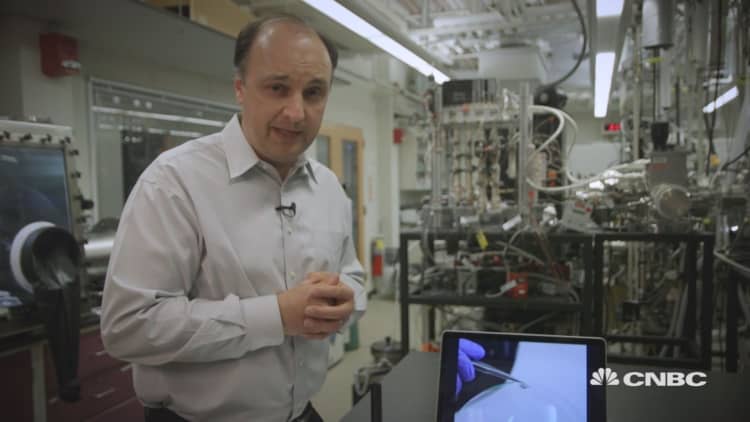
At the Massachusetts Institute of Technology (MIT), researchers are looking to transform the way we think about powering our lives.
MIT's Vladimir Bulović and his team are looking to design and develop extremely lightweight – and extremely small – solar photovoltaic cells.
In February last year, MIT said that Bulović and his colleagues had developed "the thinnest, lightest solar cells ever produced." To give you an idea of just how light and thin the cells are, a soap bubble remains intact when they are placed on top.
Going forward, the research they are doing could have a significant impact on our day to day lives.
"Nanostructure solar cells can be made semi-transparent," Bulović told CNBC's Sustainable Energy.
"In which case, you might use them as the lenses on your sunglasses and, as a result, generate power next to your ears where you might have a hearing aid that would never need to be recharged again, or maybe a Bluetooth radio, again that would never need to be recharged again."
Bulović went on to explain how the technology he and his colleagues are working on could be scaled up.
"Go bigger as you develop a technology and you can… start thinking about using it on (the) surface of every glass window on a skyscraper," he said.
"The heat that you capture in (the) form of infrared light, you can actually convert into electricity that can power that building," he added.
The International Energy Agency's Simon Müller described the cells being developed at MIT as the "next generation of solar cells" and added that they would "be important in the years to come."
"Looking further into the future, it will be about not just applications for the electricity sector itself, but also looking at other sectors." Giving one example, Müller said that solar electricity could be used to create synthetic fuels.




